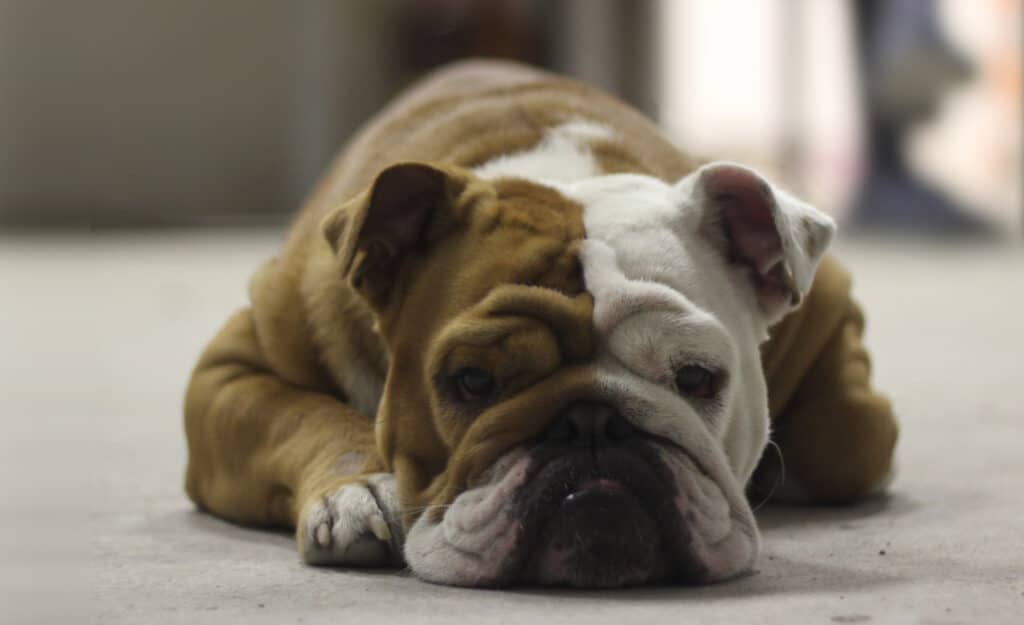Male Canine Desexing – What to Expect

What to expect when bringing your male dog in for desexing
Neutering a male dog is an excellent step to help your young man grow into a loving, well-adapted household citizen. However, at Vetmed we understand that deciding to desex or castrate your male puppy can be a scary one, so we have put together some information to help you understand both the procedure and the benefits of desexing your young man.
Why do vets recommend desexing?
This is an easy one to answer – basically because there are so many health and behavioural benefits for your little puppy. These include:
- Less roaming – intact adult male dogs tend to be excellent escape artists; able to get out of the most secure back yards and wander the streets, searching for females and staking out their territory.
- Less aggressive behaviour – intact male dogs are more likely to show aggressive behaviour towards people and other dogs. Dog fights can lead to injury or, in the worst-case scenario, death resulting from the actual fight or euthanasia due to aggressive behaviour.
- Fewer health issues – castrated dogs have fewer health issues as desexing eliminates the possibility of developing testicular cancer in later life and decreases the likelihood of developing prostate problems, tumours of the anus, and perineal hernias.
- Less sexual behaviour – intact male dogs will show humping behaviour to people and other dogs. If not desexed prior to sexual maturity, humping can become a learnt behaviour that can continue despite desexing.
- Longer life and reduced injuries – because they get into fewer fights and do less roaming, neutered dogs live longer than intact male dogs do and have fewer injuries.
- Population control – many puppies are euthanised because they are unwanted. Preventing unwanted litters of puppies is part of responsible pet ownership.
When is the best time to castrate my puppy?
The best time to neuter your puppy is around six months of age. The puppy has matured enough to make anaesthesia a low risk but is young enough not to have reached sexual maturity yet.
What does castrating a puppy involve?
In a canine castration, both testicles are removed through a small incision made through the skin just above the scrotum while the puppy is under a general anaesthetic. There will be one suture visible above the skin layer and several more under the skin. It is generally a quick and very painless procedure that only requires your puppy to be in hospital for the day.
What do I do before the procedure? At Vetmed, puppy castrations are performed by appointment only Monday to Friday at all four of our vet hospitals. When you ring to book in your young man for castration, our lovely reception staff will answer any questions you may have and reinforce any important details you need to know.
Your puppy must have nothing to eat from approximately 8 pm the night before the surgery to ensure that there is nothing in his stomach that could lead to vomiting during the anaesthetic.
It is also vital that your little one is brought into the veterinary hospital between the hours of 7:30 and 9:00 am. This allows our dedicated vets and vet nurses to perform their pre-anaesthetic health checks and procedures in a way that promotes a painless, stress-free process and ensures the risks involved are mitigated as far as possible.
What does the day of the procedure involve?
After you have dropped off your young man with the vet nurses and you have signed the consent form, the sequence of procedure is a follows:
- Pre anaesthetic examination – your puppy must be checked over by a veterinarian before any sedation or pain relief to ensure that he is healthy and there are no physical signs of illness.
- Pre anaesthetic blood tests – blood tests are performed in-house and provide the veterinarian with vital information about your young man’s internal health prior to anaesthesia.
- Premedication with sedation and pain relief – once the veterinarian has established that your puppy is healthy using the physical exam and the blood tests, sedation and pain relief is given via injection. Your young man is then moved to a specialised area within the hospital for observation before anaesthesia.
- Induction of anaesthesia – once your puppy is sedated and has adequate pain relief, a catheter is inserted, and the anaesthetic is inducted using a fast-acting anaesthetic agent such as Alfaxan. A tube is then placed into their throat to ensure their airway is protected. He is then placed on a mixture of oxygen and inhalation anaesthetic whilst the procedure is conducted.
- Recovery – once his testicles have been removed, he will then be slowly woken up. This occurs in a recovery area of the hospital where specially designed cages provide plenty of warmth. Further pain relief is then provided to ensure your young man is relaxed and pain-free as he slowly recovers. We allow at least 2 hours from the time he is awake before he can go home to mitigate any complications which may occur during this period.
What about after the procedure? What should I expect at home?
The veterinarian or vet nurse will contact you as soon as your little one is in recovery, but you must allow at least 2 hours after this call before you can pick your young puppy up from the hospital. Your young male will go home with some pain relief medication, and you will be provided with a discharge statement that will guide you on how to use the medication, what to feed your little one and other important information. A vet nurse or veterinarian will go through this statement and explain how to administer the medication.
Expect your little puppy to be a bit quiet on the night of the procedure, but he should return to his usual self by the following day. He will have sutures that will need to be removed at the hospital 7 to 10 days after the procedure. It is recommended that you do limit your little man’s exercise with just leash walks for the next 7 days post-procedure to give him time to heal. He will also not be allowed to get wet through bathing or swimming until the sutures are removed. If you have any question, we are always here to help. Please contact us at one of our four locations, and one of our team members will be able to assist.
